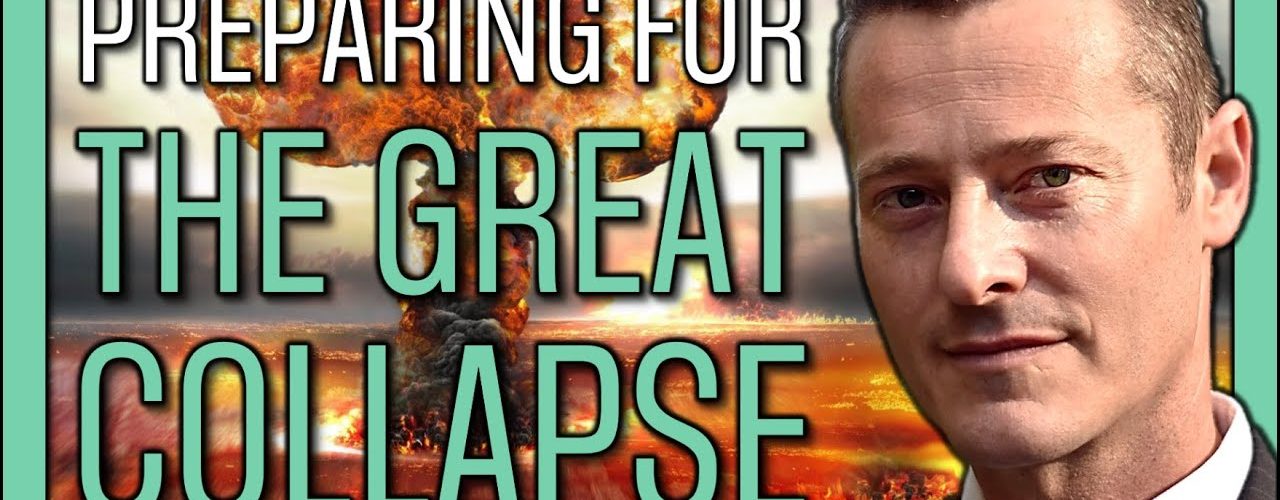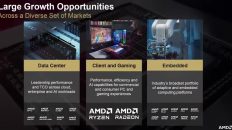Mentioned in Video:
- Rethinking Energy 2020-2030: 100% Solar, Wind, and Batteries is Just the Beginning (RethinkX, Dr. Adam Dorr): https://www.youtube.com/watch?v=6zgwiQ6BoLA
- Get the full RethinkX presentation here: https://www.rethinkx.com/energy
- I first saw this talk on #SolvingTheMoneyProblem's video titled WARNING: Investors NEED To Know This: https://www.youtube.com/watch?v=M2yvsmDvxvA
- Simon Sinek's wonderful TED Talk, titled “How Great Leaders Inspire Action”, found here: https://www.ted.com/talks/simon_sinek_how_great_leaders_inspire_action
- Malcolm Gladwell's book, The Tipping Point:https://www.amazon.com/Tipping-Point-Little-Things-Difference/dp/0316346624/
- Gartner's Hype Cycle for Emerging Technologies 2020: https://www.gartner.com/en/newsroom/press-releases/2020-08-18-gartner-identifies-five-emerging-trends-that-will-drive-technology-innovation-for-the-next-decade
- Good article that connects the Law of Diffusion of Innovation with the Gartner Hype Cycle: https://blog.octo.com/en/accelerate-innovations-by-blending-the-best-practices-of-three-models-of-innovation-diffusion-gartner-g-a-moore-c-christensen/
- Support the channel and get extra member-only benefits by joining us on Patreon: https://www.patreon.com/tickersymbolyou
#ARKInvest and #CathieWood often talk about the positives of disruptive innovation. #RethinkX‘s recent presentation on the transformation of #energy (by companies like #Tesla, ticker symbol #TSLA) tells a different story; one of the vicious cycles leading to the collapse of incumbent technologies. I argue that #ARK and Dr. Dorr are using very similar frameworks to discover the biggest #stockmarket#investment opportunities (and threats) in history and that we can use this framework to better understand ARK Invest's upcoming #BigIdeas2021 and the disruptions they will cause.
Video Transcript:
[00:00:00.520]
I'm Dr. Adam Dorr, a research fellow at RethinkX. We're on the cusp of the most profound disruption of the energy sector in over a century.
[00:00:10.000]
This is a presentation about much more than just energy and about much more than just one disruption.
[00:00:16.900]
Like others throughout history, this disruption is the result of a convergence of several key technologies.
[00:00:24.490]
Wait a minute. I think I've heard this somewhere before.
[00:00:27.460]
These platforms cut across sectors, they cut across geographies, they cut across markets. And importantly, they are converging with each other to spawn new innovation.
[00:00:41.200]
Let me set the stage here. In November of 2020, RethinkX, an independent think tank focused on analyzing and forecasting the adoption of advanced technology and its impact on society, released a new report on the impending worldwide disruption of the energy sector. In this video, I'm going to show you the parallels between this RethinkX report and ARK Invest's research methodology. Because Dr. Dorr is such a great speaker and the primary author of this report, I'm going to let him do most of the talking. What I'm going to do instead is move his presentation up a little bit and then show you ARK Invest's research underneath.
[00:01:18.520]
But instead of showing you ARK Invest research on energy storage, the topic of this RethinkX talk, I'm going to raise the stakes. I'm going to show you ARK's research for the seemingly unrelated topic of industrial robotics and see if RethinkX's approach to analyzing disruptive technology still holds true. My assertion is that RethinkX and ARK Invest have both tapped into the same set of greater market forces and greater social forces that dictate the pace of technological innovation and adoption.
[00:01:49.270]
I'm not claiming that they're the same exact approach, but I am claiming that they're similar enough that we can use RethinkX's methodology to shed light on the disruptive technologies ARK Invest focuses on: disruptive technologies like the ones they present in their annual Big Ideas report. And if I can convince you of this, then Dr. Dorr's explanation of the collapse of incumbent technologies in the energy sector can also serve as our guidelines to the collapses in other seemingly unrelated market sectors, market sectors like the ones being disrupted by these same big ideas.
[00:02:22.270]
Let's begin.
[00:02:23.710]
I'm Dr Adam Dorr, a research fellow at RethinkX. We're on the cusp of the most profound disruption of the energy sector in over a century. Like others throughout history, this disruption is the result of a convergence of several key technologies. The costs of solar, wind and batteries have been improving relentlessly for several decades, and now incumbent coal, gas and nuclear power technologies can no longer compete. This makes the disruption inevitable because of economic forces alone. The disruption won't happen everywhere at exactly the same time.
[00:03:00.880]
But for those regions that choose to lead the disruption, a 100 percent solar, wind and battery system is possible as soon as 2030. Conventional coal, gas, nuclear and other power generation assets will be stranded by the disruption. And so no new investment in these technologies is rational from this point forward. In all technology disruptions, cost is the fundamental driving force. Just since 2010, the cost of solar PV has fallen eighty two percent, or an average of nearly 16 percent per year.
[00:03:34.390]
We project that it will continue to improve at 12 percent per year during the twenty twenties. And so by 2030, solar will be more than 70 percent cheaper than it is today. The consistency is easier to see when the same data are viewed on a logarithmic chart. And it's precisely this consistency that makes these trends so predictable. In just two decades, the cost of solar will have improved by a factor of 20. Wind cost improvements are also substantial,
[00:03:59.890]
forty six percent since 2010. That's an average of almost six percent per year. And we project five point five percent per year during the twenty twenties for another forty three percent by the end of the decade, a three x improvement in twenty years. Lithium ion batteries are even more impressive. Eighty seven percent since 2010, averaging nearly 20 percent per year. And we project 15 percent improvement during the twenty twenties, totaling another eighty percent by 2030,
[00:04:25.870]
for an astounding forty five x improvement in two decades. Now, conventional analysis almost always underestimate cost improvements during disruption. Costs improve as market supply and demand expand and the industry learns from experience, when conventional analysis often make linear forecasts for market growth. In reality, disruption always follows an S curve, the first phase of which is exponential. And this is what we're seeing now. The global market for each of these three technologies shows a beautifully consistent exponential curve. So why do disruptions follow an s curve?
[00:05:07.480]
Why do disruptions follow an S curve? Not just battery technology, not just wind, not just solar, all disruptions follow the same predictable pattern. We need to change the way we talk about investing. We need to reframe the conversation in terms of opportunities enabled by these disruptive technologies and the threats they pose to existing assets. And before we can do that, we need to develop the right vocabulary. The good news is, if I've convinced you that we can talk about all disruptions the same way, whether we're talking about energy storage or robotics or genomics or blockchains or artificial intelligence, then there's only one vocabulary that we as investors need to learn.
[00:05:47.890]
And luckily for us, we have somebody willing to teach us the language right here.
[00:05:53.470]
So, why do disruptions follow an S curve? The answer is that it's because they're driven by causal feedback loops. For any new technology, falling costs increase demand, which attracts more investment in production. That, in turn, expands supply and expanding supply lowers costs even further. At the same time, growing demand also triggers more infrastructure investment and government support, which also increase supply. As supply expands, the technology itself improves, the public becomes more accepting of it, and network effects emerge around leading brands and platforms, all of which drive demand growth even further.
[00:06:34.450]
So the entire process is characterized by acceleration, with each feedback loop amplifying the others in a virtuous cycle.
[00:06:42.490]
In my opinion, this is the same virtuous cycle Cathie Wood talks about when she mentions the accelerating adoption of disruptive innovation. In my opinion, one way to measure the speed of this virtuous cycle is by Wright's law, which measures the relationship between supply, production and costs which drive demand. Wright's law is fundamental to ARK Invest's overall investment thesis, not only in how they pick their stocks, but also in how they time their picks. When they talk about technologies and companies riding declining cost curves, they're explicitly saying they expect an exponential increase in demand to follow because of this virtuous cycle.
[00:07:20.980]
What Simon Sinek is talking about in his seminal TED talk about the law of diffusion of innovation and what Malcolm Gladwell is talking about in his book, The Tipping Point, both of which are linked in the description below, is the point at which enough people adopt or demand a technology that it hits escape velocity and becomes mainstream. But this is only the positive half of the story. Remember, these are disruptive technologies. We can use the same vocabulary to target the technologies and companies being disrupted.
[00:07:52.060]
And at the same time, growing demand for the new reduces demand for the old. Revenues for the old technology decline, which causes supply to shrink a smaller supply means loss of economies of scale.
[00:08:04.570]
And so costs increase. That higher costs which translate into higher prices. Demand falls. Less demand also means less profit, less investment in production and infrastructure, less government support, all of which cost supply to contract further. And that, in turn reduces public acceptance and weakens network effects. And so for incumbents, the process is also an accelerating one, where each factor catalyzes the others. But in this case, it's a vicious cycle of decline and less demand for the old drives all the more demand for the new.
[00:08:41.110]
Now, we've seen this pattern again and again for technologies of all different kinds throughout history. And in each case, the outcome is not a slow, incremental transition, but rather a rapid and total transformation of the market that takes place over the course of just a decade or so.
[00:09:00.670]
Let me again show you that we can use this framework to understand ARK Invest's stock picks. Here's that S curve of jobs fulfilled by autonomous robots again. And you can see that most of the exponential growth occurs over roughly one decade before starting to slow down. Here's ARK Invest's estimates of CRISPR's penetration into agriculture. We're in 2021. So let's look out one decade. You can see that penetration will increase from the five to 15 percent mark today to 50 to 75 percent penetration of its biggest addressable markets in 2031.
[00:09:33.100]
Same thing. Here's the transition from horses and mules to motor vehicles in the US. In 1915, barely any market penetration of the automobile. By 1925, it has just as much as horses, which was the primary method of transportation at the time. You can even see the disruption take place on this chart as motor vehicles continue to penetrate their total addressable markets, horse drawn carriage companies faced serious disruption. Here's the decline in carriage companies from 1915 to 1925, the same period that automobiles saw their exponential growth, what this shows us is that these virtuous cycles that help disruptive technologies take off are accompanied by equally drastic, vicious cycles that forced incumbents to either adapt or die out.
[00:10:19.860]
This is an absolute collapse of carriage companies. So how come conventional Wall Street analysts don't see collapses like these coming?
[00:10:29.550]
Now, because the rate of change is slow in the early years, it almost always takes conventional analysts and observers by surprise when disruption gets going. We have every reason to expect this disruption of energy by solar, wind and batteries will follow exactly the same historical pattern. The history of technology shows us that the exponential growth phase tends to continue until the new technology comprises about seventy five percent of its global market ultimate size. Now, because most disruptions make their markets expand, this means that the new technologies often grow well beyond the size of the old system.
[00:11:10.290]
So the reason we can be so confident that the costs of solar and wind and batteries will keep falling through the 2020s is because the global markets for these technologies will continue to grow exponentially in the decade ahead. Conventional forecasts get disruption wrong. Major industry forecasts have made simple linear projections for the growth of solar, for example, year after year for twenty years. Now at the same time, the disruption creates a new system, it also wipes out the old system.
[00:11:41.400]
And this isn't theoretical. It has already begun with coal in the United States. Year after year, the same industry forecasts have been desperately trying to save coal from collapse with wishful thinking.
[00:11:53.160]
Year after year. These same industry forecasts have been desperately trying to save incumbent technologies like coal from collapse with wishful thinking. In my very first video, I said this: hello and welcome to Ticker Symbol: You, the channel that invests in you. My name is Alex. And in this video we'll be talking about how ARK Invest will keep making history because they understand it better than anyone else. And in my previous video on the collapse, I showed you this.
[00:12:22.230]
In ARK Invest's view, any company not investing aggressively in one or more of five major innovation platforms and 14 technologies evolving today run the risk of collapse. The new world order is coming and we may not be ready for it.
[00:12:41.620]
We believe that there are five innovation platforms evolving at the same time. This has never happened in history. You have to go back to the late eighteen hundreds to see three innovation platforms evolving at the same time. Back then, electricity, telephone and the internal combustion engine for the 50 years through 1929. Because of those innovation platforms, we experienced a booming economy and very low inflation. We see that happening with these five platforms which are all ready, we believe, for prime time. The five innovation platforms upon which we base all of our research, are DNA sequencing, robotics, energy storage, artificial intelligence and block chain technology.
[00:13:40.930]
Dr. Adam Dorr has shown us the last piece of this puzzle that each virtuous cycle of a disruptive technology is accompanied by at least one vicious cycle of an incumbent technology being disrupted. That means that this plot isn't just showing us the explosive growth of these new technologies. It's also showing us the size of the collapse of the old ones. Conventional analysts and forecasts are getting it wrong because they don't understand exponential curves. Whether those curves are going up or down, they aren't preparing for what's coming.
[00:14:16.210]
Are you? This is Ticker Symbol: You. My name is Alex, reminding you that the best investment you can make is in you.
If you want to comment on this, please do so on the YouTube Video Here














